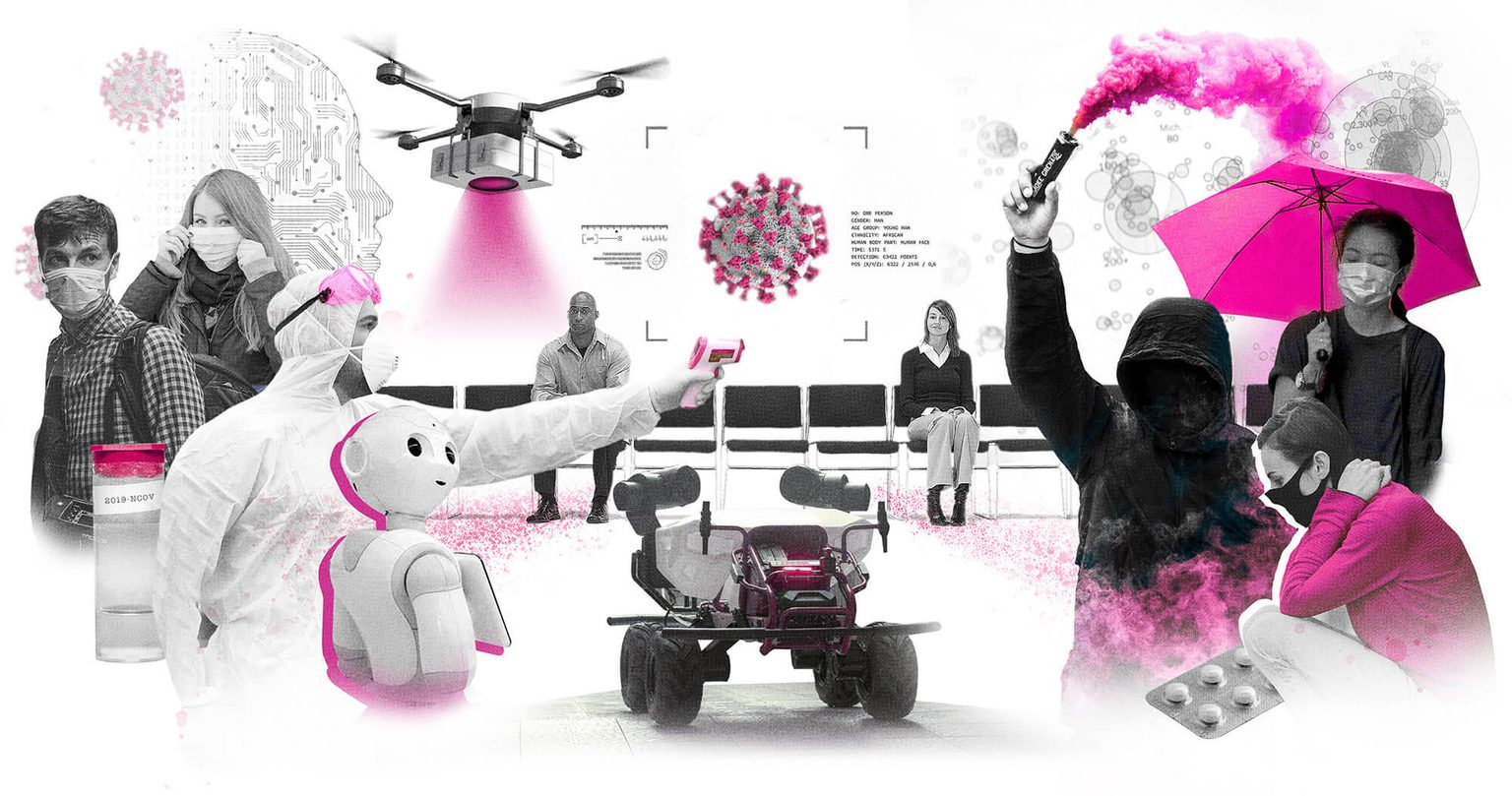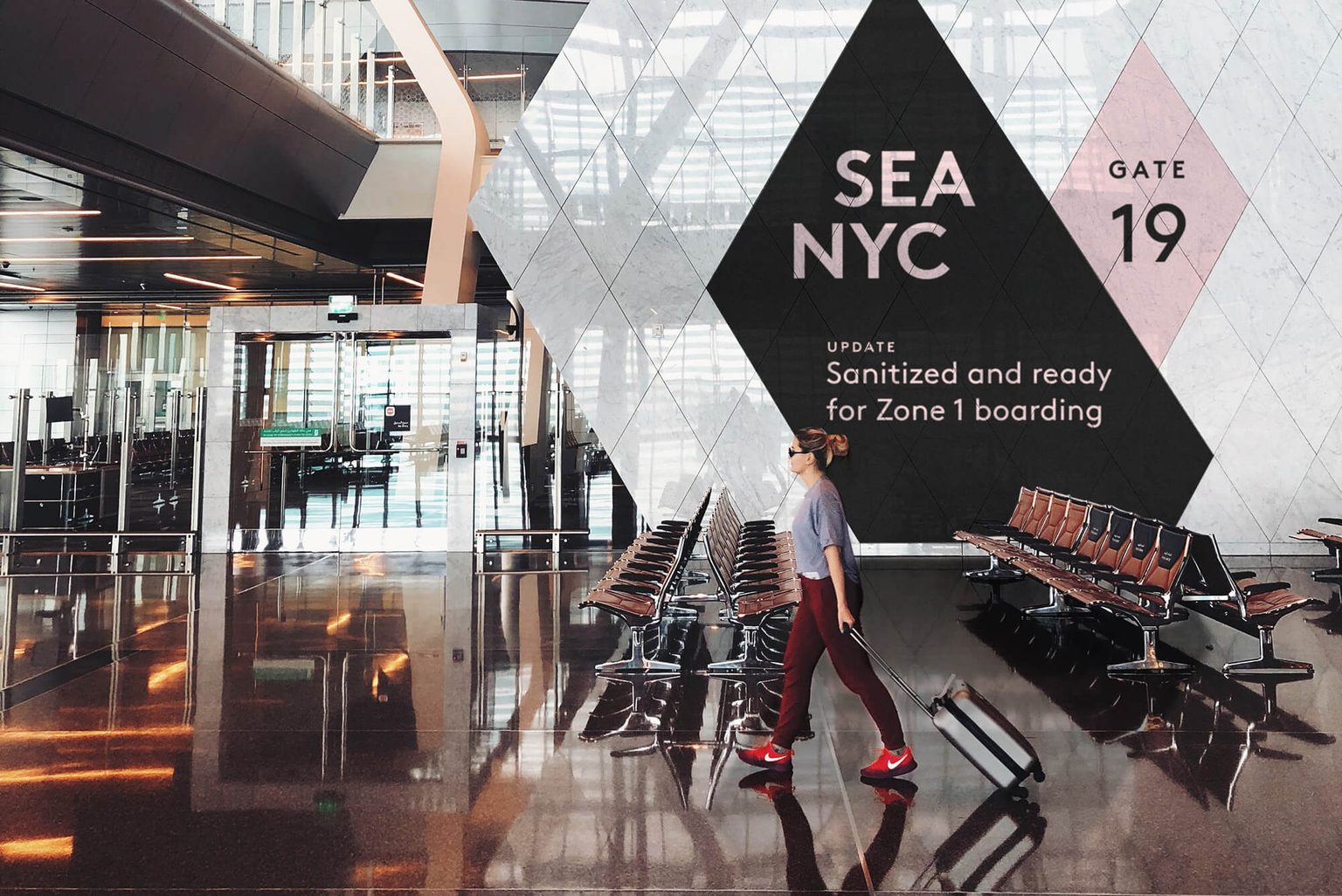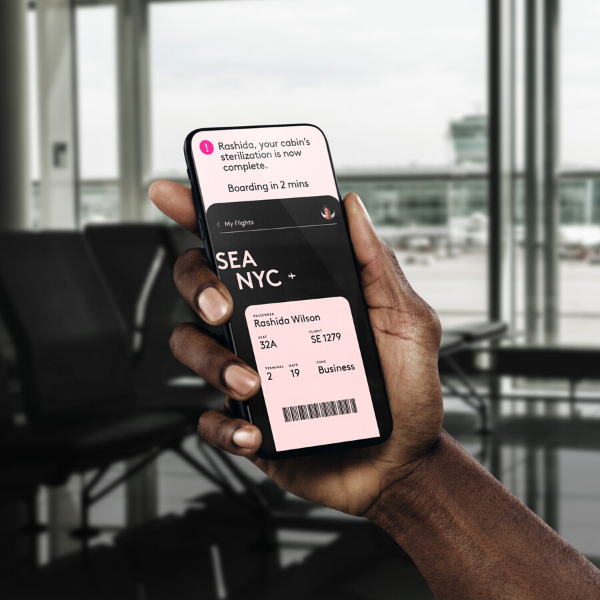
Aviation

Anthony Harcup | Senior Director of Airline Experience

Anthony Harcup
A 15-year aviation design veteran, Ant creates breakthrough products and experiences for OEMs, suppliers, and airlines such as Etihad, Delta and, JetBlue.The aviation industry is facing one of its toughest challenges in its history. Against a backdrop of a pandemic with no current cure and a need for a re-energized global transport network, it falls on the airlines to reassure passengers that it’s safe to fly.
The news is littered with stories of airlines responding rapidly, introducing PPE, rapid testing, social distancing onboard, enhanced cleaning protocols and adapted hygienic customer service. Yet many of these activities have been done in departmental silos. Each department has innovated rapidly in a bid to build passenger trust, with every man hour within each airline focussed on finding COVID-19 solutions.
This piecemeal approach isn’t any different to the usual development of passenger experience onboard aircraft, but it has been exaggerated by the pressure the current situation. Working with major aviation brands on post COVID strategies, we are seeing first-hand the depth at which the OEM’s, suppliers and airlines are working cross-industry with biomedical and chemical experts. The industry is gaining valuable insight on how to approach a clean cabin, but as of yet, no individual company has managed to successfully connect the dots between the various parts of the passenger journey.
We are still in a period of uncertainty, and passenger confidence has been knocked. No airline can vouch for a passenger’s safety in the fight against this pandemic, as the airline customer experience still doesn’t match with CDC or WHO recommendations. Best practices have to be created, and airlines need to own the conversation with their passenger in order to rebuild the trust required to secure future bookings.
We have been journey mapping for over 70 years at Teague, diving deep into key moments in a customer’s journey. That same process is invaluable right now in building a ‘Clean Design’ framework to combat the pain points that are causing a lack of trust. After all, what purpose is blocking middle-seats if this comes after pre-boarding herds passengers together in an airbridge? “Am I doing the right thing?” is the anxiety-driven sentiment now present at almost every stage of the passenger journey.
Being a truly global industry, there’s an increased need for an approach to building new human behaviors across the passenger experience. Country’s guidelines to dealing with personal hygiene have varied wildly, highlighted by the current pandemic. While there isn’t a clear answer on the horizon, it’s apparent everyone is trying to do the right thing. The most googled phrase last month was “How can I help?” which resounds succinctly with the catchphrase of 2020, “We are all in this together."
It’s impossible for an airline to present a guaranteed hygienic environment, but they can create a strong brand preference by creating emotional connections as benevolent guardians, making passengers feel as safe as possible. This has to be based on trust, and that is earned by investing in a new program of hygiene. The good news is that this is already being researched and developed by Teague. We have created a ‘Clean Design’ framework that is firmly rooted in human psychology to elicit passenger trust through the pandemic and onwards into the future.

Within the framework there are two main goals, first to protect crew and passengers and secondly to relieve anxiety from travel. To respond to the concerns of consumers the first goal has to be based on CDC and WHO procedures and interpreted to work within aviation. This will require the implementation of best practices for infection identification, social distancing and minimizing microbial contact due to surface transferal.
Only after these practices have been adopted can airlines start a process of communication and consideration. This can be imparted through crew engagement with passengers, interactive procedures and of course, sharing the relevant sanitation levels of the aircraft through existing and new airline branded communication channels.
But how can Clean Design promote human compassion? After all, the quickest way of making an impact is by retraining human behavior. For many years the airline industry has already created subconscious habits in the airline environment, from how we navigate an airport through to how we eat and sit onboard.

While Clean Design technologies like biometric ID and touchless operation are obvious physical manifestations of the future of flight, the natural development cycle of in-cabin products precludes them from being helpful when they are needed most, that’s why one of the key desired outcomes of our framework is that it immediately inspires compassionate behavioral change.
The World Health Organization recognizes the value of human behavior in managing pandemics. It has stated in its Outbreak Communications Planning Guide that behavioral changes can reduce the spread of infectious diseases by as much as 80%. No doubt everyone has caught themselves falling into old habits, which are counter-productive to the spread of the disease, i.e. forgetting to wash hands or touching surfaces inadvertently, cross contaminating and continuing the spread of a contagion. While new surfaces – such as copper and silver nitrate – are antimicrobial and help in the limit of contamination, it is human behavior that has the biggest impact.
The fundamental near-term solution needs to be rooted in human behavior as the altering the actions of humans will have the biggest impact on the hygiene of a cabin. Even the most concerted of us could still have habits that breed contagions. But with the education piece currently missing on best practice, passengers are rudderless in their approach to mitigating the spread of germs and viruses.
But how can airlines encourage human behavior through the use of design? Of course, there is the safety video and other airline communication channels to impart best practice. There are also small wins, such as branding face masks as part of amenity kits to reduce the psychological distress of being greeted by a clinical product – the same reason a child’s hospital gown features cartoon characters. Hand sanitizers will become a branded opportunity for airlines as common as branded hand soaps in lavatories, perhaps delivered pre and post-food service. Whatever the implementation, human psyche is based on herding instincts and synchronized behavioral changes are highly visual, positive reinforcements.
Not only are there near term solutions, now is a time for airlines to initiate a longer-term strategy to becoming healthcare-oriented travel companies, and ‘clean-design’ with its many tools must be their North Star. It has taken most brands several weeks – if not months – to adopt new ‘normal’ consumer experiences. We’ve seen supermarkets around the world as early adopters of new hygienic standards, but eyes will turn to the airline industry as it resumes its service to see how it is adapting. With the right tools at airline’s hands including new products, training and communication strategies, passengers could be in for a safer experience in the coming months.
Now is the time for airlines to initiate a longer-term strategy to become healthcare-oriented travel companies.
However, the key to this is in being led by a Clean Design framework, whereby the equilibrium between both the airline and customer ownership is achieved. In the future air travel could be safer than it has ever been but in the short term, “We are all in this together" might be the most obvious solution in taking the first steps in the right direction.
This article was originally published in Aircraft Interiors International magazine.